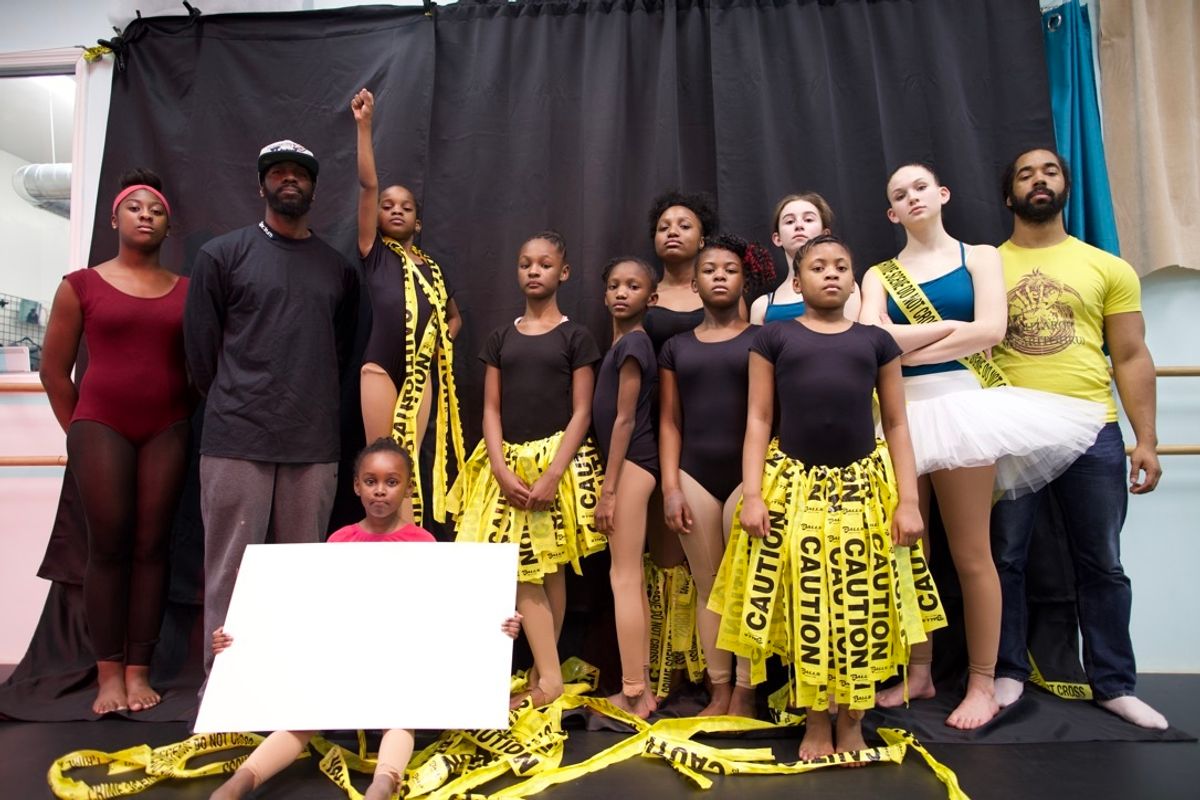
In the wake of the murders of George Floyd, Ahmaud Arbery, Breonna Taylor and other Black Americans, you may be wondering if, and how, you should talk to your students about racism.
If you’ve convinced yourself that it’s not your place, reconsider: As your students’ dance teacher, you hold a unique place in their lives and offer them a powerful outlet for expression and catharsis. And odds are, they are already aware of what’s going on in our country and have questions, and feelings. Here are three common reasons why you may have decided not to bring up racism—and why, instead, you should.
“My students are too young.”
According to the American Academy of Pediatrics, children between the ages of 2 and 4 learn and understand racial differences and bias. The concept of fairness is a significant and easy-to-understand one for children, making it a good place to start when focusing on treatment of Black and brown people through U.S. history. Point out things in their everyday lives they may see as unfair, and have them talk about why—then draw connections to larger issues of racism.
You may also find that even your youngest dancers will appreciate the chance to channel difficult subject matter into movement. “Something I have in common with my young students is that when I have intense emotions, I listen to music and move,” says Cynthia King, owner of Cynthia King Dance Studio in Brooklyn, New York. In 2017, King premiered a piece that dealt explicitly with police brutality against Black people called Hands Up. She’s kept it a part of her studio’s repertory—it can feature a rotating cast of as many as 25 dancers—and has added younger and younger dancers to it each year. This past week, she taught a portion of it via online classes to students as young as 6.
“There’s a lot of movement in that piece where you have to throw yourself around,” King says. “Expressing through that—doing that movement—was a good outlet. We all felt better after we danced.”
“It’s not my place, as their dance teacher.”
“The arts for me—and dance in particular—are absolutely the place to reflect on what’s going on in our lives and our world,” says King. “My students and I can come together on things that affect them outside of the studio, and I can let dance be an emotional and artistic outlet for them.”
After premiering Hands Up, she admits she received some pushback. “Somebody’s racist uncle called the studio, upset at what we did,” she says. “Who cares? Who needs him? I have never run my studio as a try-to-please-everybody type of school. You have to act courageously.”
If you are hesitant to introduce topics like racism, white supremacy and police brutality with your students, keep in mind that your dancers are likely experiencing the same feelings of tumult, anger and confusion that you are.
“I shared with my students that I’m feeling angry and scared and hurt and confused—all the things that we’re all feeling,” says King. “In these times, I want my kids to have some resource, to make sure that their physical and mental health is being guided, cared for and paid attention to.”

King with her students
Photo courtesy of King
“It’s not the right time—we only see each other over Zoom.”
If you’re worried that communicating with your students via an online platform might feel impersonal or superficial, consider the alternative. If you don’t talk to your students about racism—even if it is over Zoom—you will have missed an important opportunity to share helpful and meaningful information that could impact their outlook and situation. You may also send the message that you are not a resource or someone your dancers can confide in about troubling issues.
In every virtual rehearsal that she held this past Tuesday, with age groups ranging from 6-year-olds to teenagers, King and her staff opened with a discussion about recent events. “We started talking about what was going on, asking if they have feelings about it,” she says. “We’re open about our students talking to us when they want to—we’re constantly trying to get them to share with us.”
King’s studio manager, Vanessa Gordon, shared a poem written by her 13-year-old daughter about the week’s events, and reminded every group of students they virtually met with this week to speak out if they saw or heard racist activity, or even something that felt “not right.” “It was powerful that she was sharing that with them,” says King. “We’re all having bad days. We’re all worried about our families.”
“I can’t tell other people how to run their studio,” King says, “but to not address certain issues like these seems like a waste. If you have a studio, you’re a leader. You have to not be afraid—or you have to be afraid and do it anyway. You can’t be in hiding.”




